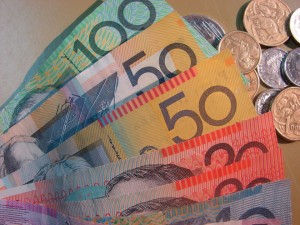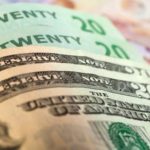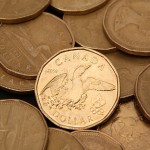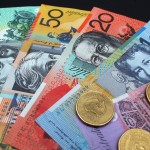 Australian dollar recorded a sharp advance to highs unseen in almost three weeks against its US counterpart on trading Tuesday, following Reserve Bank of Australias (RBA) decision to leave its benchmark interest rate unchanged at the policy meeting conducted today.
Australian dollar recorded a sharp advance to highs unseen in almost three weeks against its US counterpart on trading Tuesday, following Reserve Bank of Australias (RBA) decision to leave its benchmark interest rate unchanged at the policy meeting conducted today.
AUD/USD climbed to a daily high at 0.8914 at 7:20 GMT, also the pairs highest point since January 15th, after which consolidation followed at 0.8909, surging 1.79% for the day. Support was likely to be found at current session low, 0.8731, while resistance was to be met at January 15th high, 0.8971.
At its meeting on policy today Australian central bank maintained borrowing costs at the current all-time low level of 2.50%, which came in consonance with the majority of analysts forecasts. In a statement RBA Governor Glenn Stevens said that the most appropriate policy for the moment was that ensuring steady interest rates. He underscored that a lower exchange rate of the Australian dollar may favor a balanced economic growth in the country.
These comments came in contrast with his previous statements, where Stevens reiterated that the national currency was on uncomfortably high levels.
The central bank is expected to publish its quarterly monetary policy statement on February 7th.
“If you look at the RBA statement, that is much less dovish than the previous statement,” said Divya Devesh, a foreign-exchange analyst at Standard Chartered Plc in Singapore, cited by Bloomberg News. “They have dropped the reference to the exchange rate being uncomfortably high, so that’s definitely more hawkish. While earlier they were keeping the door open on more easing, now they are trying to say it’s the end of the current easing cycle. We’ve seen the Aussie rally on back of that.”
The yield on Australian benchmark 10-year bonds rose to 3.98%, from 3.96% before the Reserve Bank of Australia announced its rate decision.
The decision on policy came one day after the Australian Industry Group (AIG) reported that activity in Australian manufacturing sector continued to shrink for a third consecutive month in January, with the corresponding index falling to a reading of 46.7 from 47.6 in the preceding month. This data fueled concerns that nations resource-based economy would probably not manage to recover during 2014, especially after investment boom in the key sector of mining has begun to wane. According to the AIG, weak domestic demand also influenced sales in manufacturing sector.
Meanwhile, yesterday the US dollar sharply lost ground against its major peers, after the Institute for Supply Management (ISM) reported that activity in US manufacturing increased at the slowest pace in eight months in January, because of a sudden slowdown in new orders. The manufacturing PMI unexpectedly decreased to a reading of 51.3 last month, after in December it stood at 56.5. Experts had anticipated that the index will demonstrate a lesser decrease, to a value of 56.0.
The sub-index of new orders also registered a significant slowdown, reaching a reading of 51.2 in January, or the lowest level since May 2013.
Elsewhere, the Aussie advanced against the euro as well, with EUR/AUD cross down 1.78% on a daily basis to trade at 1.5181 at 8:03 GMT. In addition, AUD/NZD pair surged 0.84% to trade at 1.0915 at 8:05 GMT. It earlier reached 1.0947, which was the highest point since December 12th.





